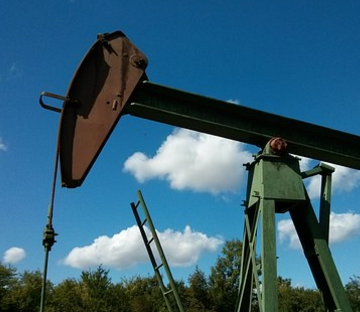Courtesy of Michael McDonald of OilPrice.com
 Much of the rout in oil prices has been predicated upon the staying power of Saudi Arabia and other OPEC producers. As oil prices have continued to fall, virtually all of OPEC has been pumping oil as fast as possible to generate increased revenues at lower prices. That practice has helped to fuel the oil glut and led to a price that would have been unthinkably low just a couple of years ago. Oil markets have been largely assuming that OPEC producers could go on producing at these levels for years, but what if that’s not the case?
Much of the rout in oil prices has been predicated upon the staying power of Saudi Arabia and other OPEC producers. As oil prices have continued to fall, virtually all of OPEC has been pumping oil as fast as possible to generate increased revenues at lower prices. That practice has helped to fuel the oil glut and led to a price that would have been unthinkably low just a couple of years ago. Oil markets have been largely assuming that OPEC producers could go on producing at these levels for years, but what if that’s not the case?
Take the strongest of the OPEC producers, Saudi Arabia for instance. Saudi Arabia has very low cost per barrel of production – much lower than any shale producer in the U.S. But as a country, Saudi Arabia also has other significant obligations that it has to meet and oil revenues are effectively its only way of meeting these obligations. The same principle holds true for all other OPEC producers, though most are in worse shape than the Saudis. With oil at these prices, all of OPEC is bleeding fast. The oil revenues that the Saudis and others are bringing in are simply not enough to meet their on-going obligations. As a result, Saudi Arabia and others have been forced to turn to their savings – foreign currency reserves.
Saudi Arabia started 2015 with roughly $720B in reserves. By August it was down to $650B. As of December, Saudi Arabia has around $620B in reserves. If oil averages $20 a barrel going forward for the next couple of years, Saudi Arabia will be broke by mid-2018 even after accounting for its recent budget cuts that trimmed internal spending. $30 a barrel oil buys the country about 6 months, tiding it over to early 2019. Libya, Iraq, and Nigeria are all in much worse shape, as of course is Venezuela.
Even before Saudi Arabia gets to the point of bankruptcy though, panic may begin to set in for OPEC. Saudi Arabia is the most stable member of OPEC, and other than its rival Iran, who is use to budgetary pressure, the rest of OPEC is largely bloated and ill-prepared for a long period of low oil prices.
Saudi Arabia will likely end 2016 with around $450B in reserves, and other OPEC members will be in much worse shape. With reserves that low, many OPEC members may be forced to turn to the bond markets. Unfortunately for OPEC, the interest rate environment around the world is starting to tighten and bond rates will likely be higher by the end of this year. Add to that the continuing uncertainty around oil prices, and some countries may find bond market access very difficult. Even the Saudis may find that their financial strain is causing concern among bond investors.
There is reason to think that the price of oil will remain subdued for a long time to come if the Saudis have anything to say about the matter. In particular, the Kingdom is concerned about the rest of the world switching to other forms of energy sources, and sees low oil prices as a way to delay the adoption of substitute forms of energy. It’s a wise long-term plan.
But even the Saudis don’t want to see oil prices this low, nor can they afford a prolonged period of oil prices below $50 a barrel. To say that oil is crucial to Saudi Arabia is an understatement; oil is to Saudi Arabia what gambling is to Las Vegas. The Saudi’s cannot withstand low oil prices forever, and if drastic changes don’t happen, then within two years, the world’s largest oil producer maybe facing very hard times.



